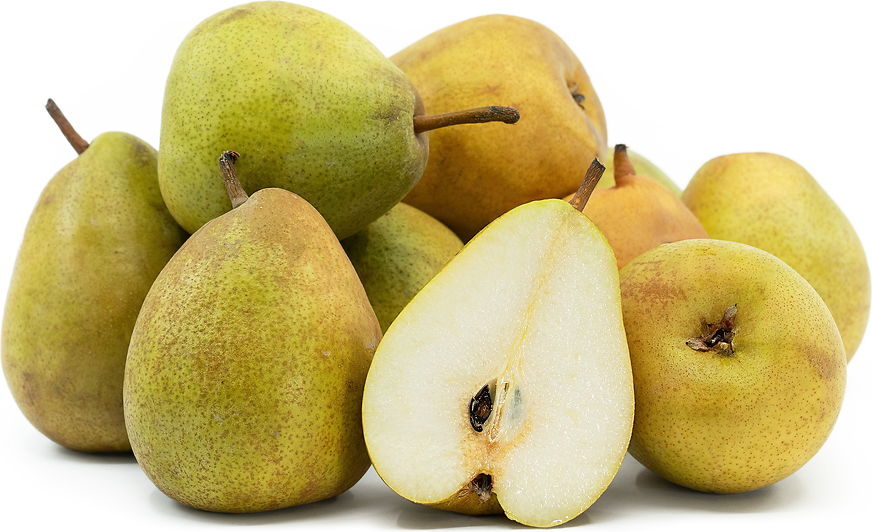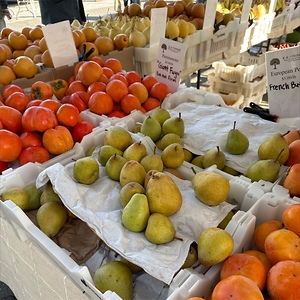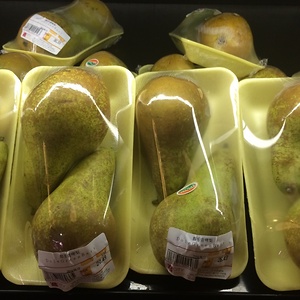


French Butter Pears
Estimated Inventory, 22 lbs : 0
Description/Taste
French Butter pears are small to medium in size and are tear-drop in shape with a bulbous, rounded base that tapers to a short, straight neck and slender green-brown stem. The smooth, thin green skin transforms to a golden green-brown when ripe and is covered in brown russeting with prominent lenticels or pores. The flesh is dense, creamy, moist, and pale yellow to cream-colored encasing small, black-brown seeds in the central core. When ripe, French Butter pears have a distinct aroma of roses and are juicy, buttery, and sweet with a hint of lemon.
Seasons/Availability
French Butter pears are available in the fall through winter.
Current Facts
French Butter pears, botanically classified as Pyrus communis, are a delicate European variety that are members of the Rosaceae family along with apricots and peaches. Also known as Buerré Hardy, Gellert's, and Butterbirne pears, French Butter pears are a relative of the d’anjou pear and are regarded as one of the best cooking pears.
Nutritional Value
French Butter pears contain vitamin C, antioxidants, fiber, and potassium.
Applications
French Butter pears are best suited for both raw and cooked applications such as baking, poaching, and glazing. They can be consumed fresh, out-of-hand, sliced thinly and paired with Roquefort cheese, cut in half and served with a piece of foie gras, or juiced and made into marinades. French Butter pears are also great for cooking, especially baking desserts, and pair well with both savory and sweet flavors. They can be used to make tarts, pies, cakes, muffins, compotes, chutneys, or baked and served over ice cream. They are also commonly used in canning preparations. French Butter pears compliment apples, dates, figs, ginger, rosemary, butternut squash, vanilla, allspice, maple syrup, honey, brown butter, mustard, and pork. They will keep up to two weeks when stored in the refrigerator and a couple of days when stored at room temperature.
Ethnic/Cultural Info
French Butter pears were originally used as a canning pear because of their short shelf life and inability to be transported long distances due to their fragile skin. They were primarily used for baby food production in the United States until chefs began locally sourcing the variety and using them for their creamy texture and juiciness. Today chefs source the French Butter pear from local farmers markets and specialty grocers to obtain small quantities to use in farm to table cuisine.
Geography/History
French Butter pears were discovered around 1820 in Boulogne, France. At the time, produce was given two names; one for a characteristic of the fruit and the second, the name of the grower who discovered the fruit or the place of its discovery. The French Butter pear earned the name Beurre Hardy from beurre, which is a description of its buttery texture and Hardy, after M. Hardy, the Director of Arboriculture at the Luxembourg Gardens. Today French Butter pears are too delicate for commercial production, so they are primarily grown and sold in local farmer’s markets in Europe and the United States in California and Oregon.
Recipe Ideas
Recipes that include French Butter Pears. One
Podcasts









